Explore the significance of the number three in Irish mythology, literature, and culture. From the triple spiral pattern found on Newgrange, to the triple goddess of sovereignty, to the motif of the threefold death, the number three appears in many forms and has deep roots in Irish tradition. Discover how the three functions of Indo-European society influenced the mythological cycle of Ireland and how Saint Patrick used the shamrock to explain the concept of the Holy Trinity. The number three continues to be an integral part of Irish identity and culture and its importance is also evident in the literature of medieval Ireland, which abounds in triplets and triads.
See The Triple Judgements of The Freemen | Poetic Wisdom of the Irish Triads.
The Triple Spiral or Triskele
The Triple Spiral, also known as Triskele, is a motif consisting of three interlocking spirals that has been used in various cultures throughout history. It is commonly associated with ancient Celtic art and is believed to have been a symbol of various concepts, such as the cycle of life, death, and rebirth, the three domains of earth, sea, and sky, and the interconnectedness of the three aspects of the goddess.
Newgrange, County Meath
One of the most famous examples of the Triple Spiral can be found on the entrance stone of the Newgrange monument in County Meath, Ireland. This ancient megalithic tomb, which dates back to the Neolithic period, is adorned with intricate spiral designs that are thought to have been a representation of the sun’s movement and the changing seasons. The Triple Spiral has since become an enduring symbol of Irish heritage and culture and this is why it can also be found in the Brehon Academy logo.
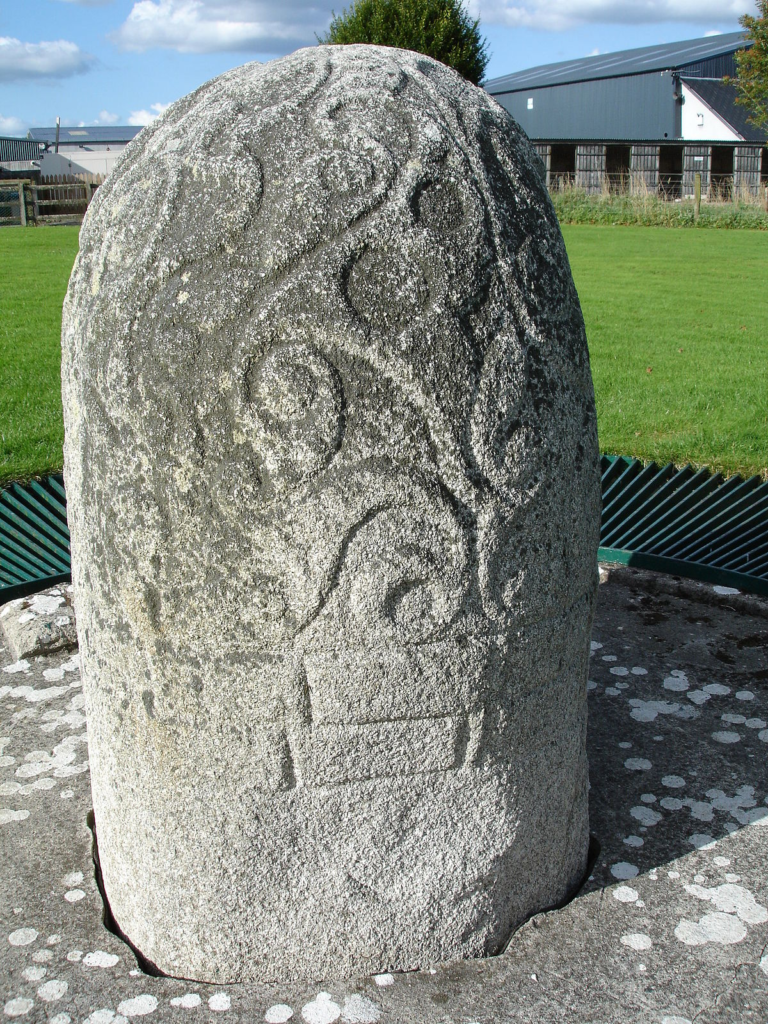
The Triskele and the Trinity
Besides the entrance stone of Newgrange, there are several other examples of Triskele use in Ireland. One of the most notable ones is the Triskele carving found on the famous Turoe Stone, which is a decorated granite stone located in County Galway. The Triskele is also commonly found on early Christian artifacts such as the Ardagh Chalice and the Book of Kells. Additionally, the symbol can be seen on many modern Irish items, including jewelry, clothing, and artwork, as it has become a popular motif in Irish culture.
Left: Stone of Turoe, Co. Galway, Ireland, source: Wikipedia.
The triskele is a symbol that has been used in early Christian art and is closely related to a select group of brooches that were produced during the ‘golden age’ of late Christian art, wonders for which Ireland was particularly renowned. In addition to the intricate jewelry, bejeweled chalices, and decorative crucifixes, the Irish were adept and producing manuscripts. Ireland boasts an impressive literary tradition that dates back to the 7th century AD.
Surviving manuscripts from every subsequent century demonstrate the importance of the Irish language as the most widely used language in Ireland until the mid-nineteenth century. Much of the country’s literature and history has been preserved through the ages exclusively in manuscript form. These manuscripts serve as invaluable historical artifacts that not only provide insight into the language and literature of early Ireland but also offer a glimpse into the cultural and societal developments that occurred during that time.
One example of this can be seen in the Book of Kells, an illuminated manuscript that was created around 800 AD. The Triskele can be found in various places throughout the manuscript, including in the decoration of the Chi Rho monogram that appears in the text of Matthew’s Gospel.
Right: Triskels appear on folio 34r of the Book of Kells is the Chi Rho page; expanding the first two letters of the word Christ.

Another example is the Book of Durrow, an illuminated Gospel book that dates back to the 7th century. The Triskele appears in the decoration of the initial letters of the text, and it is also used as a decorative motif in the borders of the pages.

The Triple Goddess
In the Mythological Cycle of Irish myth, otherwise known as the “Book of Invasions”, there are three female personifications of Ireland called Banba, Fodla, and Eriu, who have often been invoked as symbols of the land and its people through its poems and declarations throughout the ages. The island is called Éire in its Gaelic language form which is said to derive from the goddess Eriu.
These goddesses are often described as a “triple goddess of sovereignty”, and they were each married to one of the final three Tuatha Dé Danann kings of Ireland: Mac Gréine, Mac Cuill, and Mac Cécht, who reigned in turn until the arrival of the Milesians.
Click here for videos about the Mythological Cycle of Ireland.
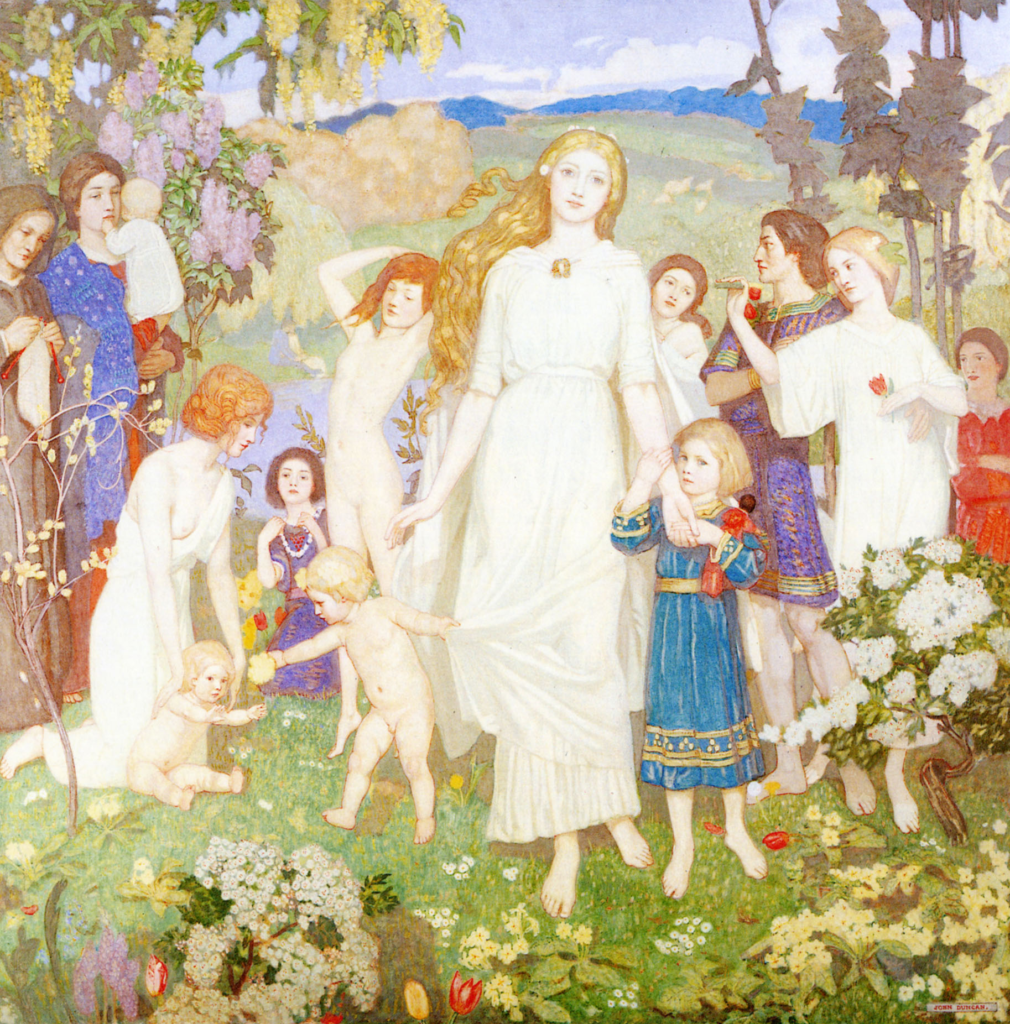
Earlier in the mythological accounts, the Dagda, a major figure in Irish myth, had three daughters who were all named Brigit but were each associated with different aspects of life such as poetry, healing, and smithing. Similarly, the three sons of Bres (son of Elathu), Brian, Iuchar, and Iucharba, were often depicted together in myth and legend.
The concept of the triple goddess was also significant in early Irish beliefs, with various goddesses often represented as maiden, mother, and crone. The Morrígan is closely associated with the sovereignty of the land and with good kingship, as the goddess of sovereignty was believed to grant power and legitimacy to the king. Morrígan’s triple aspect possibly represents the three phases of the king’s reign: his ascent to power, his rule, and his eventual death and succession. The Morrígan is also associated with warfare, and she is often depicted as a fierce, warlike figure who appears on the battlefield to predict the outcome of the conflict and to influence its outcome.
While the Morrígan is often considered a triple goddess, her triple nature is ambiguous and inconsistent. Sometimes she appears as one of three sisters, along with Badb and Macha, who are also daughters of Ernmas. In other instances, the trinity consists of Badb, Macha, and Anand, collectively known as the Morrígna. Nemain and Fea also occasionally appear in different combinations. Despite these various appearances, the Morrígan can also appear alone, and her name is sometimes used interchangeably with Badb.
Three-Fold Death
The motif of the threefold death, which involves three different ways of dying, is also frequently encountered in Irish myth and legend. This theme is part of the Tripartite functions of Proto-Indo-European, which includes the three functions of Indo-European society: priestly, warrior, and productive/fertile function.
The Threefold Death is a common theme in Irish mythology, which is inflicted upon kings, heroes, and gods. The threefold death is a punishment for an offense against the three functions of Indo-European society. In addition, the tales of Cu Chulainn often feature triple adversaries, emphasizing the importance of three in the hero’s journey.
There are two types of threefold deaths in Irish myth and ritual:
1. Where a person dies simultaneously in three ways e.g. by hanging (or strangulation or falling from a tree), wounding, and by drowning (or poison).
2. Where the distinct deaths are sacrifices to three distinct gods of the three functions.
One such story is found in the Life of St. Columba (Vita Columbae), where a cruel and bloodthirsty man named Aedh is prophesized to die a triple death. The passage from the Life of St. Columba mentions three specific sins committed by Aedh that are against the priestly, warrior, and productive/fertile function in Indo-European society. These sins include being ordained a priest outside of the Church, committing murder, and engaging in homosexual activities. The punishment for his transgressions is quite gruesome, where Aedh will reincarnate as a dog, continue his murderous ways, and eventually die by drowning after being pierced in the neck with a spear.
Right: Columba Banging on the Gate of Bridei (1906) by J. R. Skelton.

Interestingly, Diarmuid, who was killed by Aedh, also meets his fate in a triple death. The prophecy of his threefold death is foretold and it is clear that Diarmuid has violated two of the three functions, namely the priestly function by trying St. Ronan and the warrior function by murdering Flann. As punishment for his actions, Diarmuid also meets his end in a triple death.
Saint Patrick’s Shamrock: The Holy Trinity
One of the most well-known examples of the importance of “three” in Irish culture is the story of Saint Patrick and the Trinity. According to legend, when Saint Patrick was preaching Christianity in Ireland, he used the shamrock to explain the concept of the Holy Trinity – the Father, the Son, and the Holy Spirit.

The three leaves of the shamrock represented the three persons of the Trinity, while the stem represented the unity of the three. This concept became so closely associated with Saint Patrick and Ireland that the shamrock is now a symbol of Irish identity and is commonly worn on Saint Patrick’s Day.
The Symbolic Meaning of the Irish Tri-Colour
The Irish flag, also known as the Tricolour, is a symbol deeply ingrained in Irish history and culture. The flag is composed of three equally sized vertical stripes of green, white, and orange. Each of these colors holds significant meaning for the Irish people.

The green stripe represents the Gaelic tradition and culture of Ireland, while the orange represents the Protestant community in Ireland. The white stripe in between represents the peace and harmony between the two communities. The flag was first introduced by Thomas Francis Meagher in 1848 during the Young Irelander Rebellion. It gained popularity during the Easter Rising of 1916 and was subsequently adopted as the national flag in 1922.
Today, the Irish flag is flown proudly at events and ceremonies throughout Ireland and is a symbol of the country’s rich history and culture.
Sources and Additional Materials
- The Face on the Turoe Stone by Foster & Batten: https://www.cambridge.org/core/journals/proceedings-of-the-prehistoric-society/article/abs/face-on-the-turoe-stone/6FFEFB3F8E0F502AD504A80EE4B32A92
- Threefold death, Wikipedia: https://en.wikipedia.org/wiki/Threefold_death
- The Threefold Death, Emerald Isle: https://emeraldisle.ie/the-threefold-death

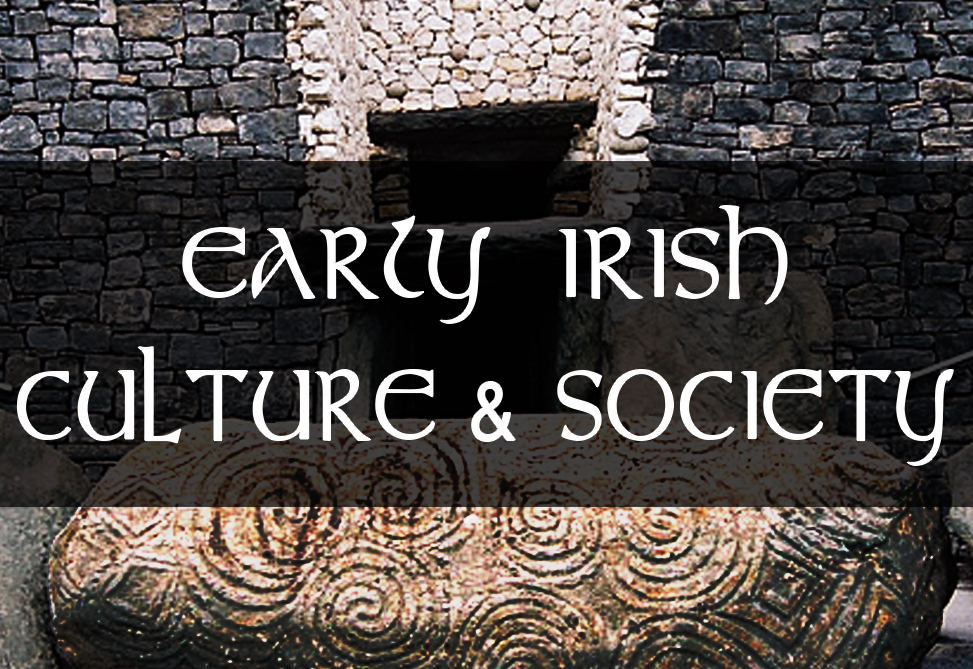
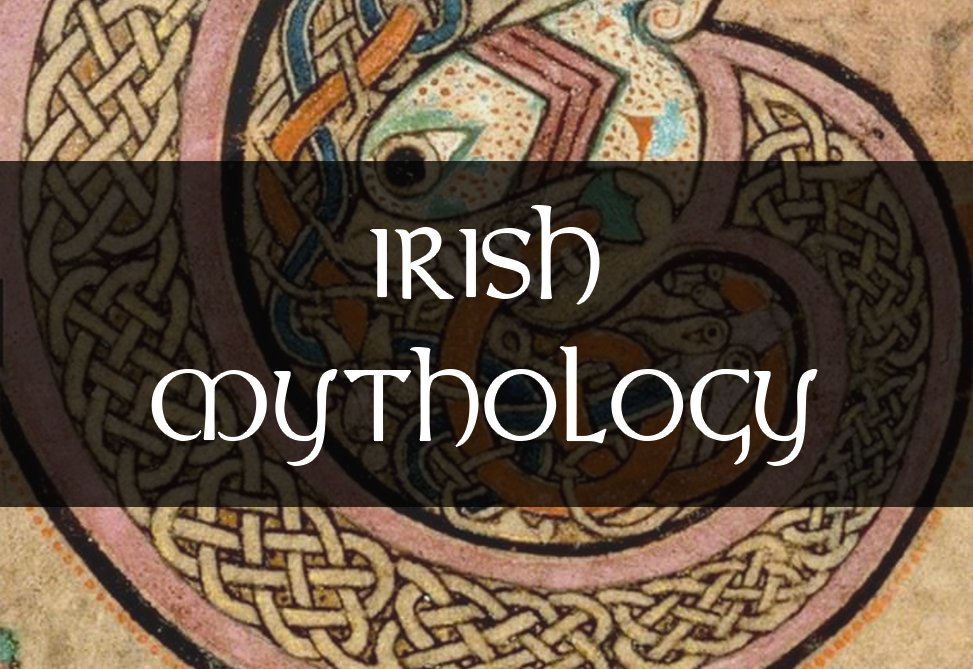
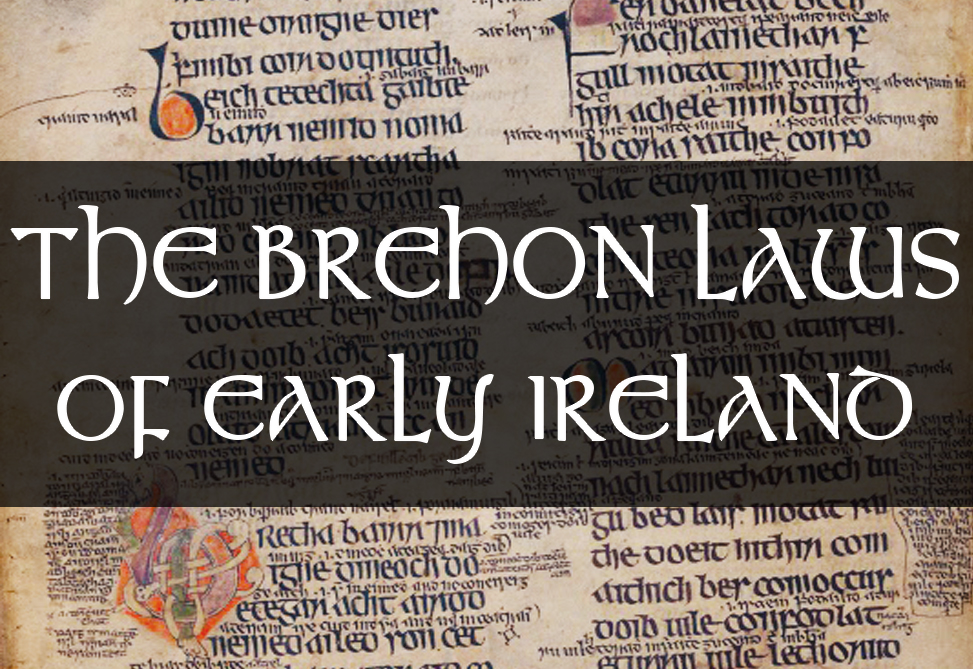

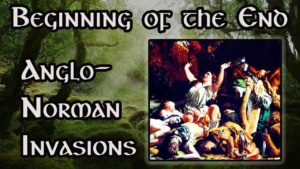
Pingback: Builders, Kings, and Astronomers: 6 Ancient Sites to Explore the Ingenuity of Ireland's Ancestors - The Brehon Academy